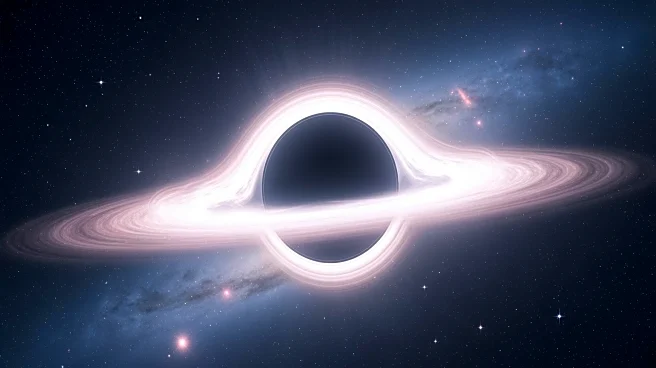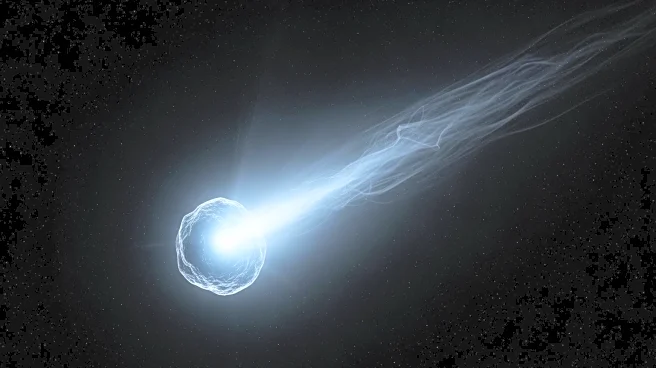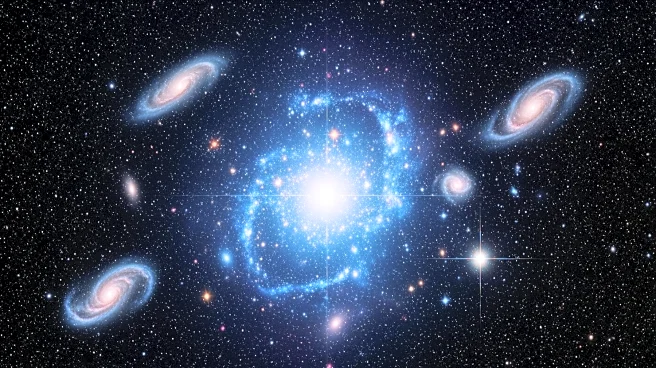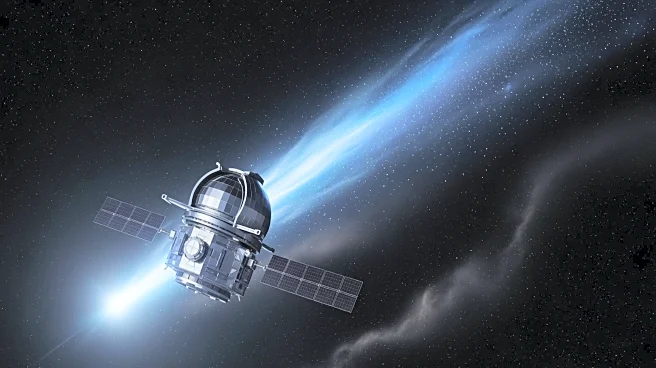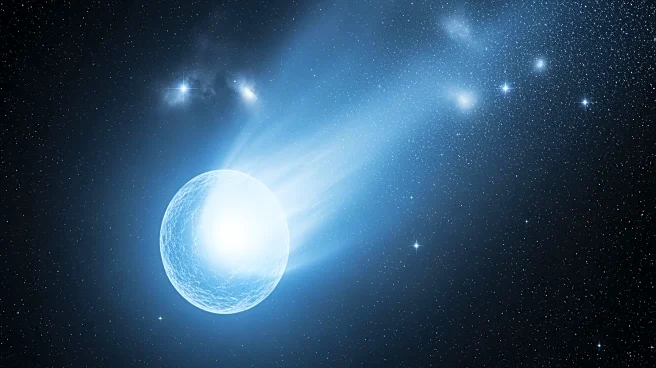What's Happening?
Astronomers using the James Webb Space Telescope (JWST) have discovered a rapidly feeding supermassive black hole in the early universe, located in the galaxy CANUCS-LRD-z8.6. This galaxy, existing just
570 million years after the Big Bang, is part of a class known as 'Little Red Dots,' which have puzzled scientists due to their unusual characteristics. The black hole's rapid growth challenges existing theories about galaxy and black hole formation during the universe's infancy. The discovery was made possible by JWST's Near-Infrared Spectrograph, which detected faint light and spectral features indicating the presence of highly ionized gas swirling around the black hole.
Why It's Important?
This discovery is significant as it challenges current understanding of black hole and galaxy formation in the early universe. The rapid growth of the supermassive black hole in CANUCS-LRD-z8.6 suggests that black holes may have developed faster than their host galaxies, contrary to previous beliefs. This finding opens new avenues for research into the processes that allowed such massive objects to emerge so early in cosmic history. Understanding these processes could provide insights into the evolution of galaxies and black holes, impacting theories about the universe's development and the role of black holes in shaping cosmic structures.
What's Next?
The CANUCS team plans to continue observing CANUCS-LRD-z8.6 with the JWST and the Atacama Large Millimetre/submillimetre Array (ALMA) in Chile. These observations aim to study the cold gas in the galaxy and further define the characteristics of its supermassive black hole. The team hopes to find more galaxies like CANUCS-LRD-z8.6, which could offer greater insights into the origins of black holes and galaxies. These efforts may lead to a deeper understanding of the JWST's 'Little Red Dots' and the early universe's dynamics.
